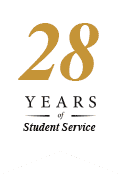Marie Hastings-Tolsma
Evid Based Nurs. 2014;17(3)
Commentary on: Beckmann MM, Stock OM. Antenatal perineal massage for reducing perineal trauma. Cochrane Database Syst Rev 2013;(4):CD005123
Implications for Practice and Research
-
Pregnant women who have not yet experienced vaginal birth should be informed about the benefits of antenatal perineal massage.
-
Conditions where antenatal perineal massage may benefit women who have already experienced vaginal birth, needs further exploration.
-
The additive value and acceptability of intrapartum perineal massage, including its effect on immediate postpartum pain, dyspareunia and incontinence, should be assessed.
Context
Upwards of 70% of women experience perineal trauma during childbirth.[1] Concern over such trauma is significant for pregnant women, particularly for those from ethnic minorities, where cultural differences have been found to increase worry about possible intervention, pain and discomfort associated with birth.[2]Anecdotal reports have long suggested that performing perineal massage during pregnancy and labour is of benefit in reducing perineal trauma when done. Perineal massage involves digitally stretching perineal tissues by inserting lubricated fingers 1.5 inches into the lower portion of the vagina and slowly massaging downward in a U-shaped movement. The value of the massage to reduce more severe perineal lacerations during labour has been demonstrated.[3] There has been similar suggestion that digital perineal massage during pregnancy is beneficial in reducing the risk of laceration and/or the need for episiotomy.[4] Despite these beliefs, there has not been adequate research to determine the value of prenatal digital perineal massage in reducing perineal trauma associated with vaginal birth.
Methods
Beckmann and Stock conducted a Cochrane systematic review aimed at assessing the effect of digital antenatal perineal massage on perineal trauma at birth and subsequent morbidity. The primary outcomes included a type of perineal laceration, need for suturing and incidence of episiotomy. Secondary outcomes included length of the second stage of labour, instrumental delivery, patient satisfaction, urinary and faecal incontinence, and postpartum perineal pain among women giving birth vaginally plus various neonatal outcomes. Four randomised and quasi-randomised controlled trials from three countries involving 2497 women who had used any method of antenatal digital perineal massage for at least the last 4 weeks of pregnancy were examined.
Findings
Though there is some risk of blinding and reporting bias, the results support antenatal digital perineal massage in late pregnancy. A reduction in lacerations that require suturing (RR=0.91, 95% CI 0.86 to 0.96) and a decrease in the likelihood of episiotomy (RR=0.84, 95% CI 0.74 to 0.95) were observed, but only for women without prior vaginal birth. Conversely, for women with prior vaginal birth, there was a significant decrease in the incidence of pain at 3 months postpartum (RR=0.45, 95% CI 0.24 to 0.87). There were no differences in instrumental deliveries, sexual satisfaction or incontinence for women practicing antenatal perineal massage.
Commentary
This study supports the practice of digital perineal massage by women who have not had a prior vaginal birth, when done on average as few as 1.5 times/week in the last weeks of pregnancy. However, more frequent massage makes it less likely for on-going perineal pain postpartum for women who have had prior vaginal birth. Surprisingly, the results did not favour conducting perineal massage with greater frequency on those women who have not yet given birth vaginally where, theoretically, a perineal massage should promote improved tissue distensibility and reduce potential trauma. Other factors relating to the effectiveness of antenatal perineal massage in the prevention or reduction of perineal trauma are, no doubt, in need of examination and may provide useful data in understanding this unanticipated result. Variation in the outcome measures and a lack of clarity regarding pregnancy and childbirth-related factors (eg, perineal massage during labour, birth weight, maternal habitus, maternal expectation and motivation, models of care place of birth) are important aspects to consider.
This review used good-quality data and provides useful information for health professionals and patients to consider when attempting the reduction of perineal trauma in childbirth. The findings support the need for additional research while underscoring the potential utility of an intervention for select pregnant women. While there remain unanswered questions about the utility of antenatal perineal massage for all women, there are no known adverse effects of antenatal perineal massage and, in the absence of such evidence, there is little reason to preclude patient instruction on its potential benefit.



